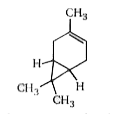Catalytic hydrogenation of phenyl diazonium bromide produces
phenylhydrazine
bromobenzene
benzene
phenylamine
The correct Answer is:A
To solve the question regarding the catalytic hydrogenation of phenyl diazonium bromide, we can break down the process step by step.
1. Understanding Phenyl Diazonium Bromide:
- Phenyl diazonium bromide has the structure of a benzene ring (C6H5) attached to a diazonium group (N2+), which is represented as C6H5-N2+Br-. The diazonium group contains a nitrogen-nitrogen triple bond (N≡N).
2. Catalytic Hydrogenation Process:
- Catalytic hydrogenation involves the addition of hydrogen (H2) in the presence of a catalyst, typically nickel (Ni), platinum (Pt), or palladium (Pd). This process is used to reduce unsaturated compounds to saturated compounds.
3. Reduction of the Diazonium Group:
- In the case of phenyl diazonium bromide, the N≡N bond is an unsaturated bond. When hydrogen is added, this bond gets reduced. The first step results in the formation of a nitrogen double bond (N=N), leading to the intermediate product C6H5-N=NH-Br.
4. Further Reduction:
- The next step involves the reduction of the N=NH bond. The hydrogenation continues, and the N=NH bond is converted into a saturated bond, resulting in the formation of phenyl hydrazine (C6H5-NH-NH2).
5. Final Product:
- The final product of the catalytic hydrogenation of phenyl diazonium bromide is phenyl hydrazine (C6H5-NH-NH2).
6. Conclusion:
- Among the given options, phenyl hydrazine is the correct answer.
Final Answer:
The product formed from the catalytic hydrogenation of phenyl diazonium bromide is phenyl hydrazine.
- Phenyl diazonium bromide has the structure of a benzene ring (C6H5) attached to a diazonium group (N2+), which is represented as C6H5-N2+Br-. The diazonium group contains a nitrogen-nitrogen triple bond (N≡N).
- Catalytic hydrogenation involves the addition of hydrogen (H2) in the presence of a catalyst, typically nickel (Ni), platinum (Pt), or palladium (Pd). This process is used to reduce unsaturated compounds to saturated compounds.
- In the case of phenyl diazonium bromide, the N≡N bond is an unsaturated bond. When hydrogen is added, this bond gets reduced. The first step results in the formation of a nitrogen double bond (N=N), leading to the intermediate product C6H5-N=NH-Br.
- The next step involves the reduction of the N=NH bond. The hydrogenation continues, and the N=NH bond is converted into a saturated bond, resulting in the formation of phenyl hydrazine (C6H5-NH-NH2).
- The final product of the catalytic hydrogenation of phenyl diazonium bromide is phenyl hydrazine (C6H5-NH-NH2).
- Among the given options, phenyl hydrazine is the correct answer.
The product formed from the catalytic hydrogenation of phenyl diazonium bromide is phenyl hydrazine.
Similar Questions
Knowledge Check
How many alkene on catalytic hydrogenation given isopentane as a product ?
A2B3C4D5Which of the following alkene on catalytic hydrogenation given cis and trans-isomer ?
A B
B C
C Dall of these
Dall of theseAn optically active compound A with molecular formula C8H14 undergoes catalytic hydrogenation to give meso compound, the structure of (A) is :
A B
B C
C D
D
PhCH2Claq. NaCN−−−−−→Catalytic hydrogenation−−−−−−−−−−−−−→(∪)
The final product (∪) is :
View SolutionCatalytic hydrogenation of which of the following gives a product that further gives three photochemical monochlorination products (considering structural isomers only )?
View SolutionState the conditions required for the following reactions to take place :
(i) Catalytic hydrogenation of ethyne.
(ii) Preparation of ethyne from ethylene dibromide.
View SolutionTowards catalytic hydrogenation, the least reactive compound is
View SolutionPhenylethanol may be prepared by the reaction of phenyl magnesium bromide with :
View Solution

